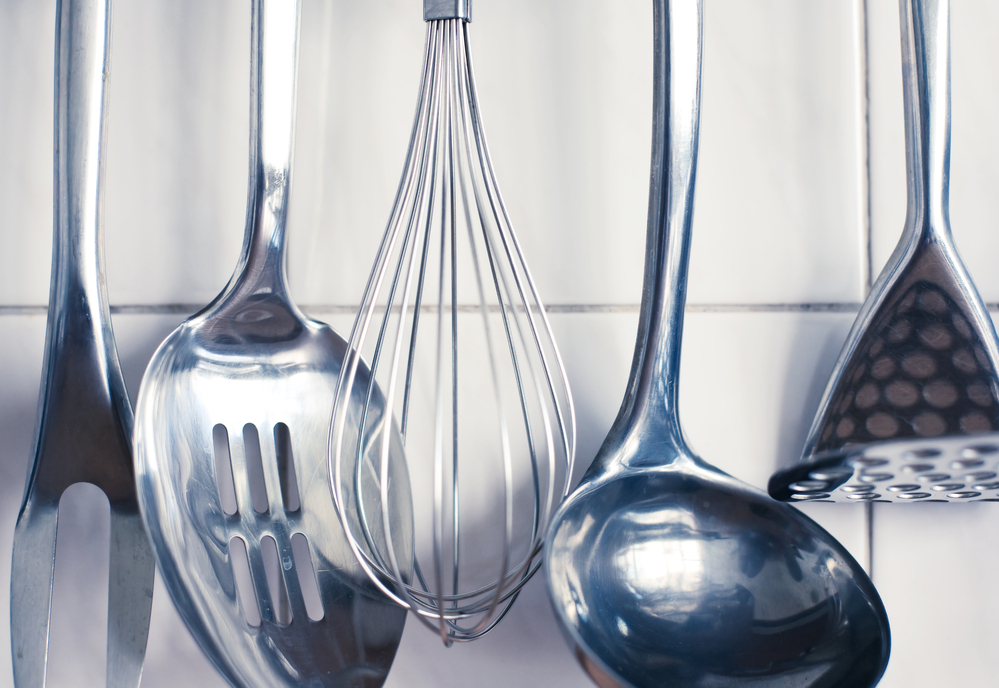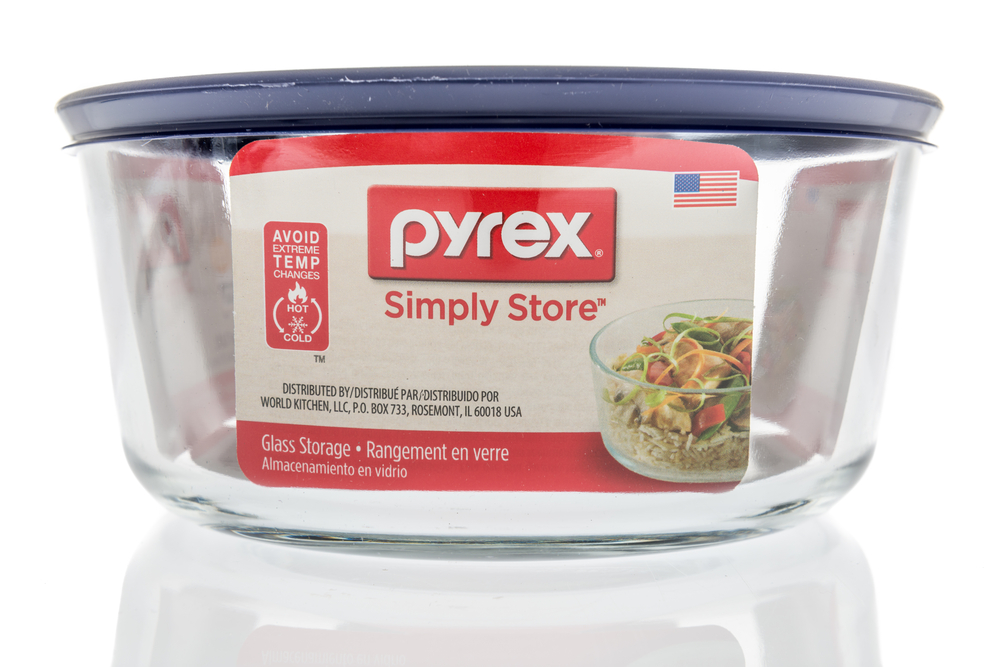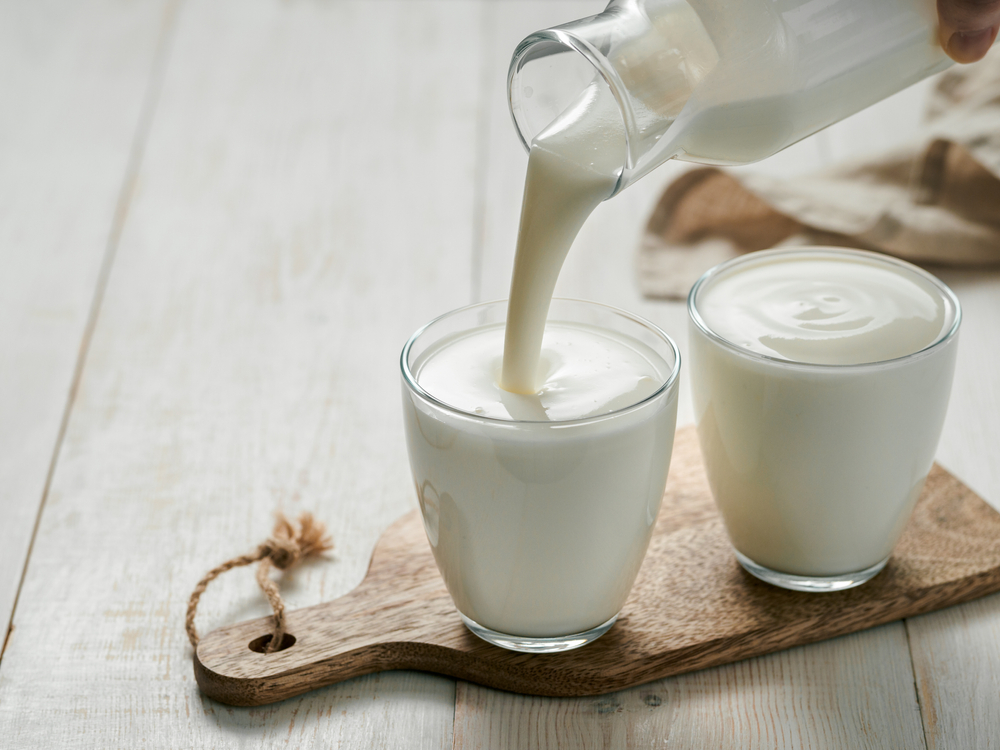As someone who loves to cook, I’ve often wondered if it’s safe to put a Dutch oven in the oven. Dutch ovens are a versatile and essential tool in the kitchen, but it’s important to understand how to use them properly.
In this article, I’ll answer the question of whether or not you can put a Dutch oven in the oven and provide some tips for using Dutch ovens in the oven.
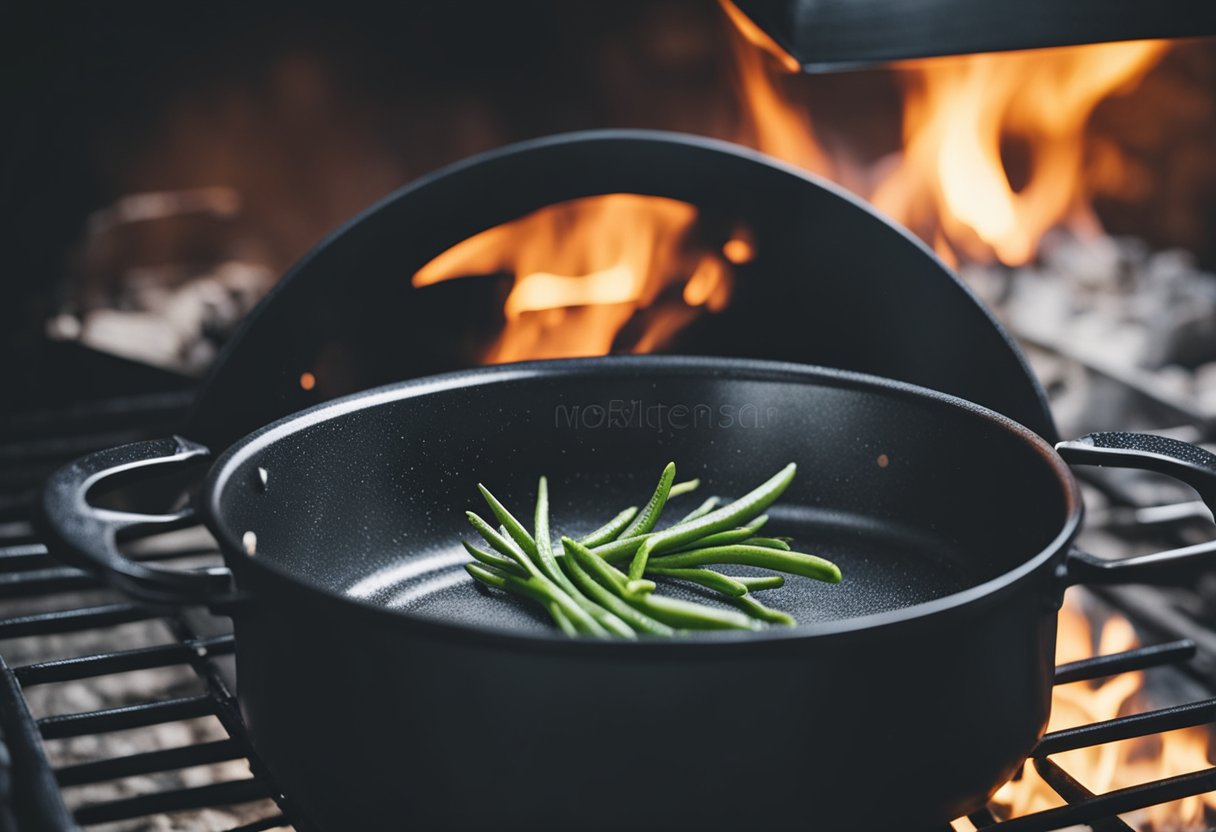
Dutch ovens are heavy-duty cooking pots with tight-fitting lids that are typically made of cast iron or ceramic.
They are designed to be used on the stovetop or over an open flame, but they can also be used in the oven.
However, it’s important to note that not all Dutch ovens are oven-safe, so it’s essential to check the manufacturer’s instructions before using them in the oven. In the next section, we’ll take a closer look at Dutch ovens and how they work.
Key Takeaways
- Dutch ovens are versatile cooking pots that can be used on the stovetop, over an open flame, and in the oven.
- Not all Dutch ovens are oven-safe, so it’s important to check the manufacturer’s instructions before using them in the oven.
- When using a Dutch oven in the oven, it’s important to preheat the oven and avoid placing a cold Dutch oven in a hot oven.
Understanding Dutch Ovens
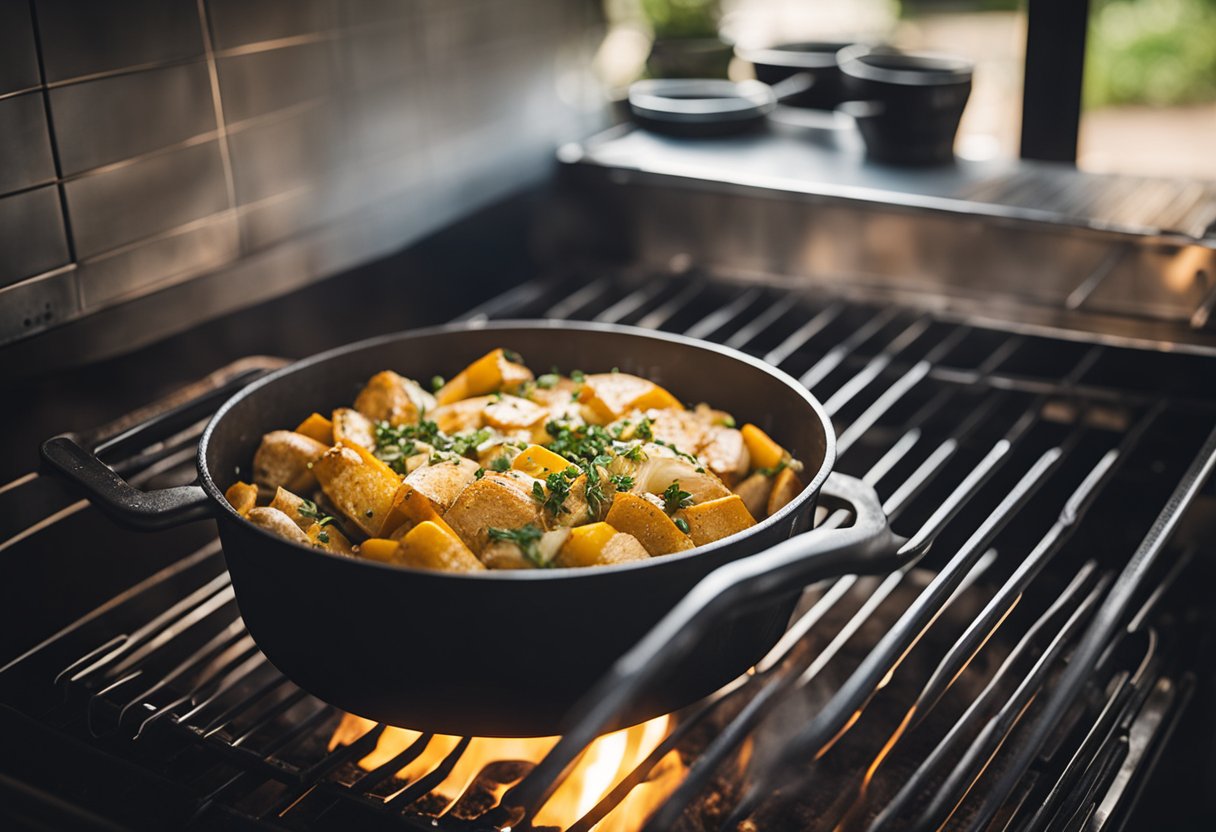
As the name suggests, a Dutch oven is a versatile cooking pot that originated in the Netherlands. Dutch ovens can be made of various materials, including cast iron, aluminum, and stainless steel.
However, the most common and traditional material used for Dutch ovens is cast iron.
Cast iron is an excellent material for Dutch ovens because it distributes heat evenly and retains heat well.
Cast iron Dutch ovens are also durable and can last for generations if properly cared for. Cast iron Dutch ovens are available in both coated and uncoated versions.
Enameled cast iron Dutch ovens, also known as enamel Dutch ovens, are coated with a layer of enamel that prevents rust and makes them easier to clean.
Enamel Dutch ovens are available in a wide range of colors and are a popular choice for home cooks and professional chefs alike.
Le Creuset and Staub are two of the most popular brands of enamel Dutch ovens.
When choosing a Dutch oven, it’s essential to consider your budget and cooking needs.
Premium Dutch ovens, such as those from Le Creuset and Staub, can be expensive, but they are often worth the investment for serious home cooks and professional chefs.
However, budget-friendly options are also available and can be a great choice for occasional use.
Overall, Dutch ovens are a versatile and essential piece of cookware that can be used for a wide range of cooking tasks, including baking, roasting, and braising.
Cast iron Dutch ovens are a classic choice that offers excellent heat distribution and retention, while enamel Dutch ovens are a more modern option that is easy to clean and comes in a range of colors.
Dutch Oven in the Oven
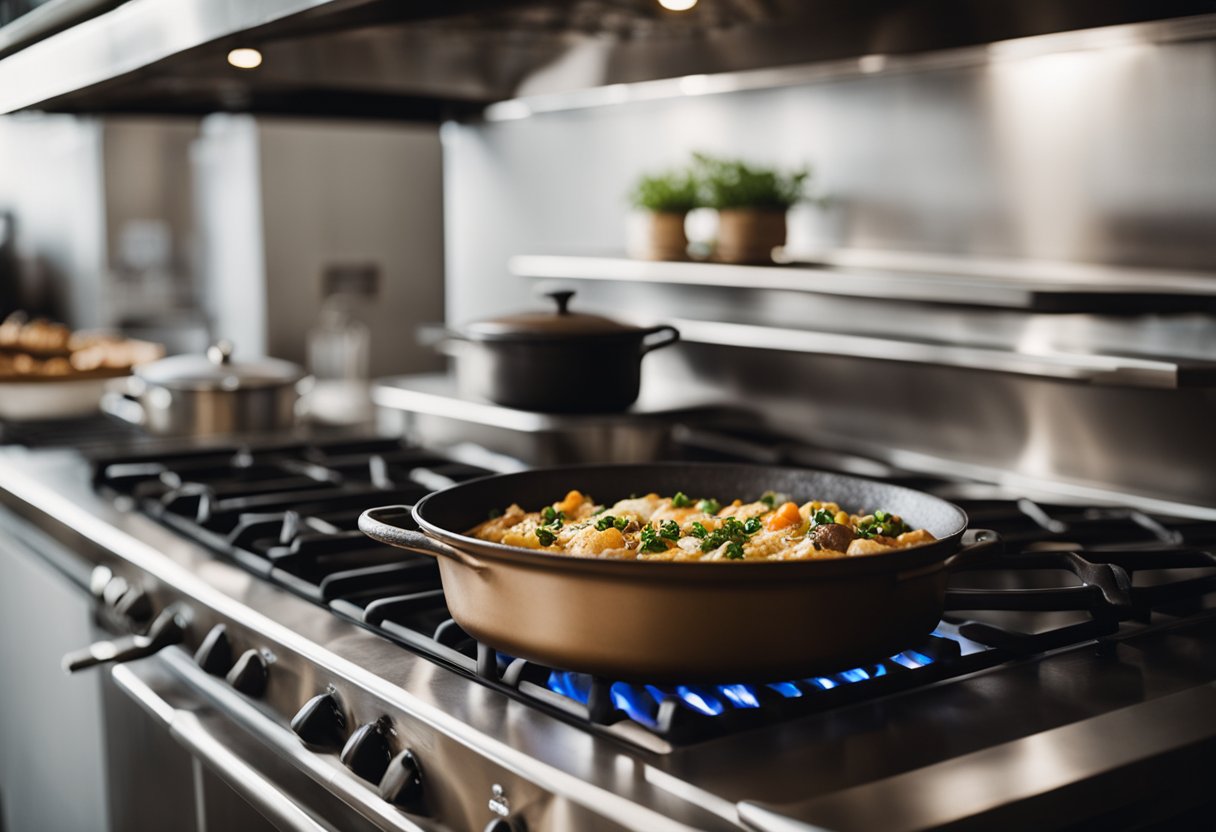
As a cooking enthusiast, I often use my Dutch oven for cooking stews, soups, and casseroles. But can you put a Dutch oven in the oven?
The answer is yes, you can put a Dutch oven in the oven as long as it is oven-safe.
In general, Dutch ovens are designed to be used on all heat surfaces, including induction, electric solid plate, ceramic glass, radiant ring, gas, wood, or coal.
However, not all Dutch ovens are oven-safe, so it is important to check the manufacturer’s instructions before using it in the oven.
When using a Dutch oven in the oven, it is important to preheat the oven to the desired temperature before placing the Dutch oven inside.
Placing a cold Dutch oven into a preheated oven can cause thermal shock and damage the Dutch oven.
In addition, it is recommended to use oven mitts or potholders when handling the Dutch oven, as it can get hot.
One of the advantages of using a Dutch oven in the oven is its ability to distribute heat evenly.
The thick walls and heavy lid of the Dutch oven help to retain heat and distribute it evenly, resulting in perfectly cooked meals.
In conclusion, if you have an oven-safe Dutch oven, you can use it in the oven for cooking a variety of dishes. Just remember to preheat the oven, use oven mitts, and check the manufacturer’s instructions before use.
Cooking Techniques with Dutch Ovens
Using a Dutch oven in the oven can be a great way to make a variety of dishes.
Dutch ovens are versatile and can be used for baking bread, braising meats, making stews and soups, roasting vegetables, frying, deep frying, searing, slow cooking, and simmering.
When baking bread in a Dutch oven, it is important to preheat the oven and the Dutch oven before placing the bread inside.
This will help ensure that the bread is evenly cooked and has a crispy crust.
For braising, the Dutch oven can be used on the stovetop or in the oven. When using the oven, it is important to use a Dutch oven with a tight-fitting lid to prevent moisture from escaping.
When making stews and soups, the Dutch oven can be used on the stovetop or in the oven. Slow cooking is also a great option with a Dutch oven, as the heavy lid and thick walls help to retain heat and moisture.
Roasting vegetables in a Dutch oven is simple and easy. The heavy walls of the Dutch oven help to distribute heat evenly, ensuring that the vegetables are cooked to perfection.
Frying and deep frying can also be done in a Dutch oven. When frying, it is important to use a Dutch oven with high sides to prevent oil from splattering.
Searing meat is a great way to lock in flavor and juices. A Dutch oven can be used on the stovetop or in the oven for searing meat.
Finally, Dutch ovens can even be used on a campfire or grill. Just make sure to use a Dutch oven with a flat bottom and a tight-fitting lid to prevent ash and debris from getting inside.
Overall, Dutch ovens are a versatile and useful tool in the kitchen. With a little creativity and experimentation, you can use a Dutch oven to make a variety of delicious dishes.
Ingredients and Recipes
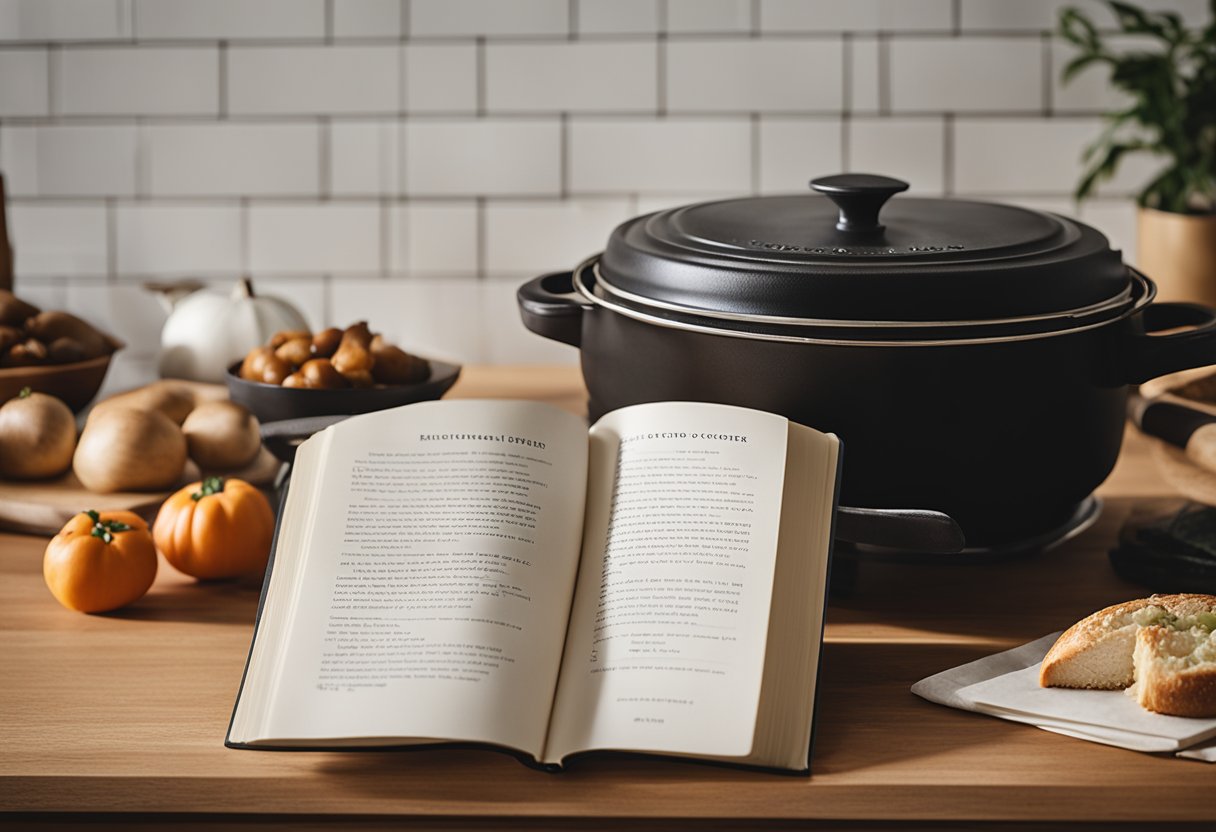
When it comes to cooking with a Dutch oven, the possibilities are endless. You can make a wide variety of recipes ranging from stews, soups, casseroles, and even bread.
One of the great things about cooking with a Dutch oven is that it can handle a lot of different ingredients.
For meats, you can use beef, pork, chicken, or even game meats like venison or elk. Vegetables like carrots, onions, and celery are great for adding flavor and texture to your dishes.
Root vegetables like potatoes and sweet potatoes can also work well in Dutch oven recipes.
When it comes to liquids, you have a lot of options. Broth, stock, and wine can all be used to add flavor and moisture to your dishes. You can also use water if you prefer a milder flavor.
To add some richness to your dishes, you can use oil or butter. Olive oil, vegetable oil, and butter are all great options. They can help to brown meats and vegetables and add depth of flavor to your dishes.
Here are a few recipes to get you started:
- Beef Stew: Brown some beef in your Dutch oven, then add onions, carrots, celery, and potatoes. Pour in some beef broth and let it simmer for a few hours until the beef is tender and the vegetables are cooked through.
- Chicken and Rice: Brown some chicken in your Dutch oven, then add rice, chicken broth, and your favorite seasonings. Let it cook in the oven until the rice is tender and the chicken is cooked through.
- Vegetable Soup: Saute some onions, carrots, and celery in your Dutch oven, then add vegetable broth and your favorite vegetables. Let it simmer until the vegetables are cooked through and the flavors have melded together.
These recipes are just a starting point. Don’t be afraid to experiment with different ingredients and flavors to create your own unique Dutch oven dishes.
Care and Maintenance of Dutch Ovens
As someone who loves cooking with Dutch ovens, I understand the importance of taking good care of them.
Proper care and maintenance will not only prolong the life of your Dutch oven but also ensure that it performs optimally every time you use it. Here are some tips on how to care for and maintain your Dutch oven:
Cleaning Your Dutch Oven
Cleaning your Dutch oven is an essential part of maintaining it. After every use, let the Dutch oven cool down completely before cleaning it. Never put a hot Dutch oven in cold water, as this can cause it to warp or crack.
To clean your Dutch oven, use warm water, mild soap, and a soft sponge. Avoid using abrasive cleaners or steel wool, as they can scratch the surface of your Dutch oven.
If there are any stubborn stains or burnt-on food, you can use a paste made of baking soda and water to scrub them away. Rinse the Dutch oven thoroughly with warm water and dry it with a soft towel.
Maintaining the Lid and Knob
The lid and knob of your Dutch oven are essential components that help to retain heat and moisture. To maintain them, make sure to clean them thoroughly after every use.
If your Dutch oven has a metal knob, be careful not to touch it with your bare hands while it’s still hot. You can use a potholder or oven mitt to remove the lid.
If your Dutch oven has a silicone, ceramic, plastic, or wooden knob, make sure to check the manufacturer’s instructions for cleaning and maintenance.
Some knobs may not be oven-safe, and you may need to remove them before using your Dutch oven in the oven.
Handling Your Dutch Oven
Dutch ovens can be heavy, especially when they’re filled with food. Always use both hands to lift and carry your Dutch oven.
If your Dutch oven has natural wood handles, make sure to keep them dry and oiled to prevent cracking or splintering.
Avoid using your Dutch oven in the dishwasher, as the harsh detergents and high heat can damage the surface of your Dutch oven. Instead, wash it by hand with warm water and mild soap.
Using Your Dutch Oven in the Oven
Most Dutch ovens are oven-safe, but you should always check the manufacturer’s instructions before using it in the oven.
Make sure to use oven mitts or potholders when removing the Dutch oven from the oven, as it will be very hot.
If your Dutch oven has a non-stick coating, avoid using metal utensils or abrasive cleaners, as they can scratch the surface. Instead, use wooden or silicone utensils and a soft sponge or cloth to clean it.
Taking good care of your Dutch oven will ensure that it lasts for years and performs optimally every time you use it.
With these tips, you can keep your Dutch oven in excellent condition and enjoy delicious meals for years to come.
Benefits of Using Dutch Ovens
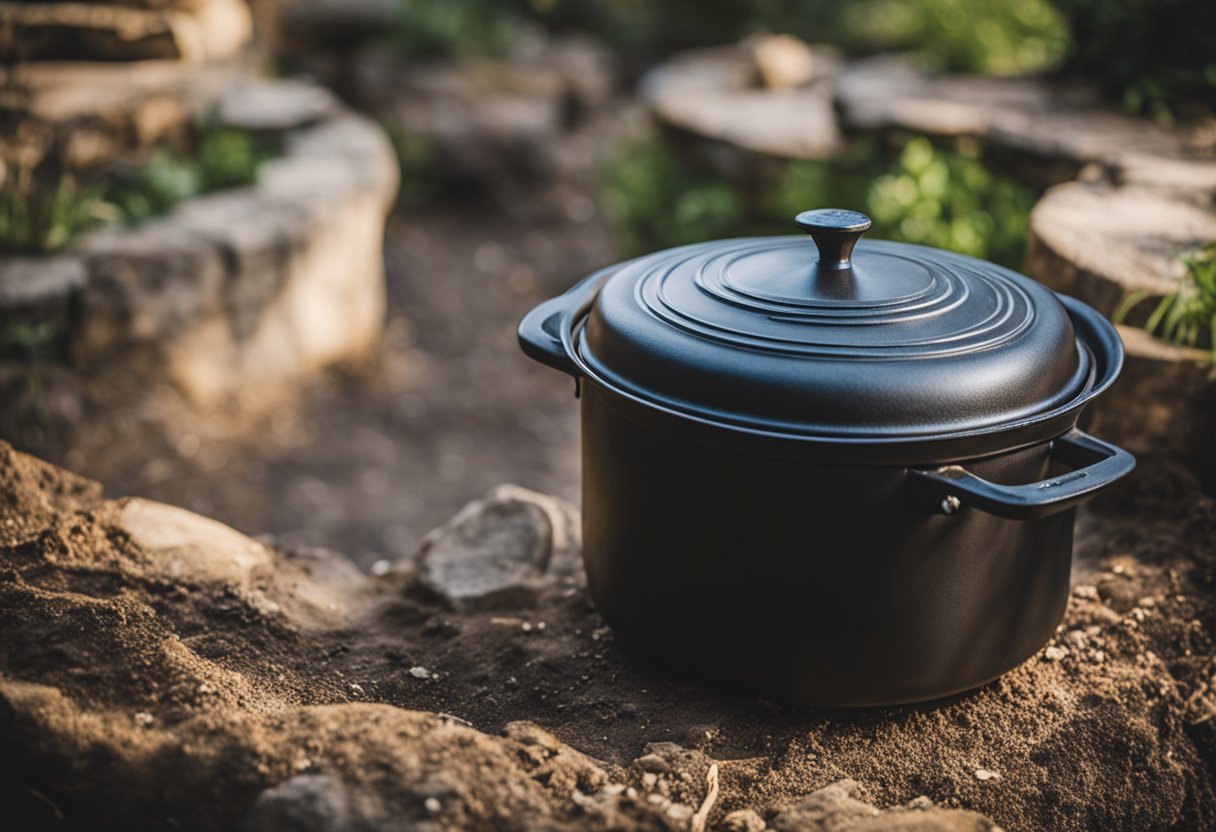
As someone who loves to cook, I can confidently say that Dutch ovens are one of the most versatile and useful pieces of cookware in my kitchen.
They are perfect for braising meat, making stews, soups, and even baking bread.
One of the main benefits of using a Dutch oven is that it retains moisture and steam, which is essential for producing tender and juicy meats.
The tight-fitting lid traps the moisture inside the pot, preventing the food from drying out, and ensuring that it cooks evenly.
Another benefit of using a Dutch oven is that it helps create a crispy crust on meats and bread. The heavy lid of the Dutch oven traps the steam inside the pot, creating a moist environment that helps to keep the food from drying out.
As a result, the food develops a crispy crust on the outside while remaining moist and tender on the inside.
Dutch ovens are also great for braising meat. The heavy pot ensures that the heat is evenly distributed, which is essential for braising tough cuts of meat.
The low and slow cooking process helps to break down the connective tissue in the meat, resulting in a tender and flavorful dish.
One of the best things about Dutch ovens is that they come in a variety of materials, including cast iron, ceramic, and even aluminum.
Each material has its own unique benefits and drawbacks, but they all share the ability to create delicious and flavorful dishes.
Overall, Dutch ovens are an essential tool for any home cook. They are versatile, durable, and can help you create delicious meals with ease.
Potential Issues with Dutch Ovens
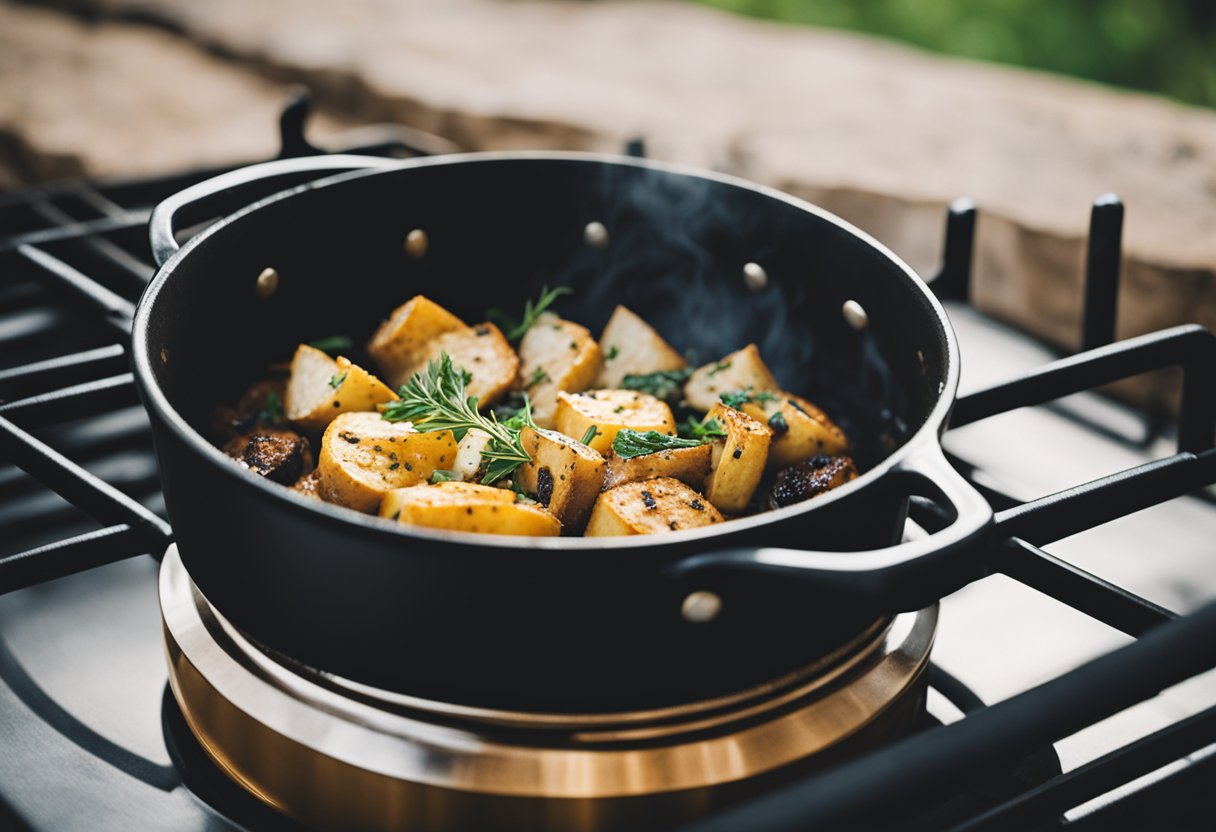
As versatile as Dutch ovens are, there are a few potential issues to keep in mind when using them in the oven or on the stovetop.
Cracking
One of the most common issues with Dutch ovens is cracking. This can happen if the oven is exposed to sudden changes in temperature, such as going from the oven to the fridge or freezer.
To avoid this, it’s best to let the Dutch oven cool down to room temperature before transferring it to the fridge or freezer.
Flames
Another issue to keep in mind is that Dutch ovens should not be used over an open flame. This can cause the enamel to crack or the cast iron to warp.
Instead, it’s best to use Dutch ovens on a stovetop or in the oven.
High Heat
While Dutch ovens are great for holding heat, they should not be heated on high heat. This can cause the finish to scorch, which can be difficult to remove.
Instead, it’s best to heat Dutch ovens over medium heat, which is totally adequate for most recipes.
Low Heat
On the other hand, Dutch ovens can also be used on low heat. Once the pot is warmed up, you can generally go even lower to maintain a gentle simmer or slow cook.
This makes Dutch ovens great for recipes that require long, slow cooking times.
Enameled Dutch Ovens
Enameled Dutch ovens are another popular type of Dutch oven. While they are great for cooking and look beautiful on the table, they can be more delicate than traditional cast iron Dutch ovens.
Enameled Dutch ovens should not be heated above 450°F, as this can cause the enamel to crack or discolor.
Racks
Finally, when using a Dutch oven in the oven, it’s important to use a rack or trivet.
This will prevent the bottom of the Dutch oven from coming into direct contact with the hot surface of the oven, which can cause the enamel to crack or the cast iron to warp.
Overall, Dutch ovens are a versatile and reliable piece of cookware that can be used in a variety of ways. By keeping these potential issues in mind, you can ensure that your Dutch oven lasts for years to come.
Frequently Asked Questions
Is it safe to put a Dutch oven in the oven?
Yes, it is safe to put a Dutch oven in the oven. Dutch ovens are designed to be used on all heat surfaces, including ovens fired by gas, wood, or coal.
However, there are some considerations to keep in mind to ensure the safety of your Dutch oven.
For example, you should avoid exposing the Dutch oven to sudden temperature changes, such as placing a cold Dutch oven in a hot oven, as this can cause thermal shock and damage the enamel.
What temperature can I put my Dutch oven in the oven?
You can put your Dutch oven in the oven at any temperature, but you should avoid exposing it to sudden temperature changes.
To ensure the safety of your Dutch oven, you should only place it in a preheated oven and avoid placing it directly on the bottom of the oven.
Can I put my enameled Dutch oven in the oven?
Yes, you can put your enameled Dutch oven in the oven. Enameled Dutch ovens are designed to be used on all heat surfaces, including ovens.
However, you should avoid exposing the Dutch oven to sudden temperature changes, as this can cause thermal shock and damage the enamel.
Can I put my stainless steel Dutch oven in the oven?
Yes, you can put your stainless steel Dutch oven in the oven. Stainless steel Dutch ovens are designed to be used on all heat surfaces, including ovens.
However, you should avoid exposing the Dutch oven to sudden temperature changes, as this can cause warping or other damage.
Should I preheat my Dutch oven in the oven?
Yes, you should preheat your Dutch oven in the oven. Preheating your Dutch oven will ensure that it is evenly heated and will help prevent food from sticking.
To preheat your Dutch oven, place it in a preheated oven for at least 15 minutes before adding your food.
Do I need to put the lid on my Dutch oven when baking?
Yes, you should put the lid on your Dutch oven when baking. The lid helps to trap moisture and heat, which is important for many recipes.
However, there are some recipes that call for leaving the lid off, so be sure to follow the recipe instructions carefully.



